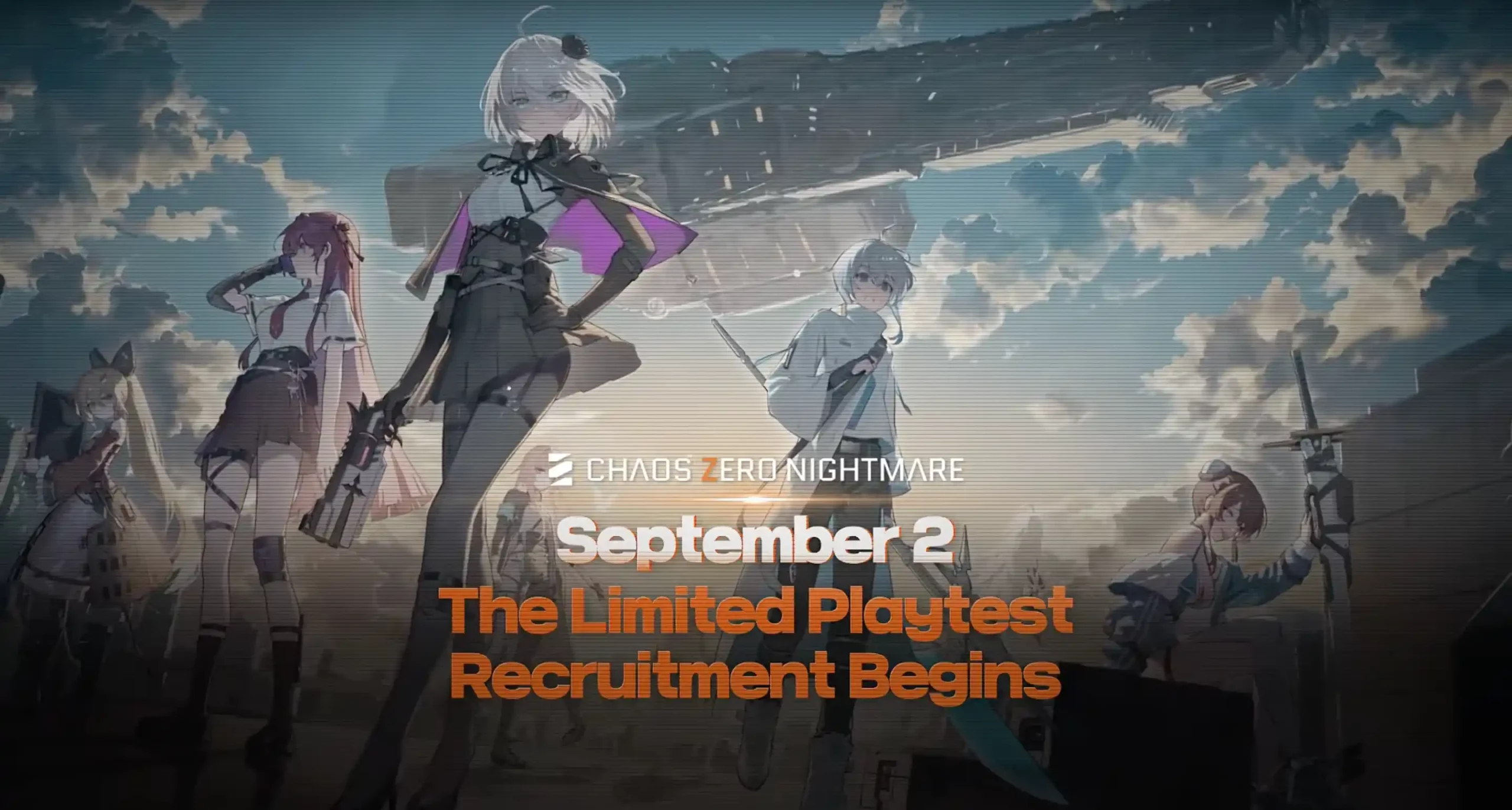
Chaos Zero Nightmare – Beta Gameplay Footage Breakdown
While Global has to wait until September 2 to sign up for Chaos Zero Nightmare’s beta test, players in Korea have gotten access to the closed beta already. I went through hours of Korean YouTube frame-by-frame to bring you this complete gameplay footage breakdown.
- The Gacha System
- Combatants and Partners
- Battle Gameplay
- Chaos Missions (Roguelike Mode)
- Shops
- Other Features
The Gacha System
TL;DR: 58 soft pity, 70 hard pity, 50/50. Character and weapon gacha.
Chaos Zero Nightmare features Combatants (playable characters) and Partners (equipable characters; basically weapons) that you can pull for. There are 5* and 4* Combatants while there are 5*, 4*, and 3* Partners. There is a static 12% chance to get a 4* Combatant or Partner on any pull, and every 10 pulls is guaranteed to feature a 4*. Most of the game’s major banners feature the same 5* rates:
- 1–57 pity: 1% to get a 5*.
- 58–69 pity: +4.5% to get a 5* every pull starting from 58 pity.
- 70 pity: 100% chance to get a 5*.
There are currently six different types of banners available in the game so far:
Limited Combatant Banner
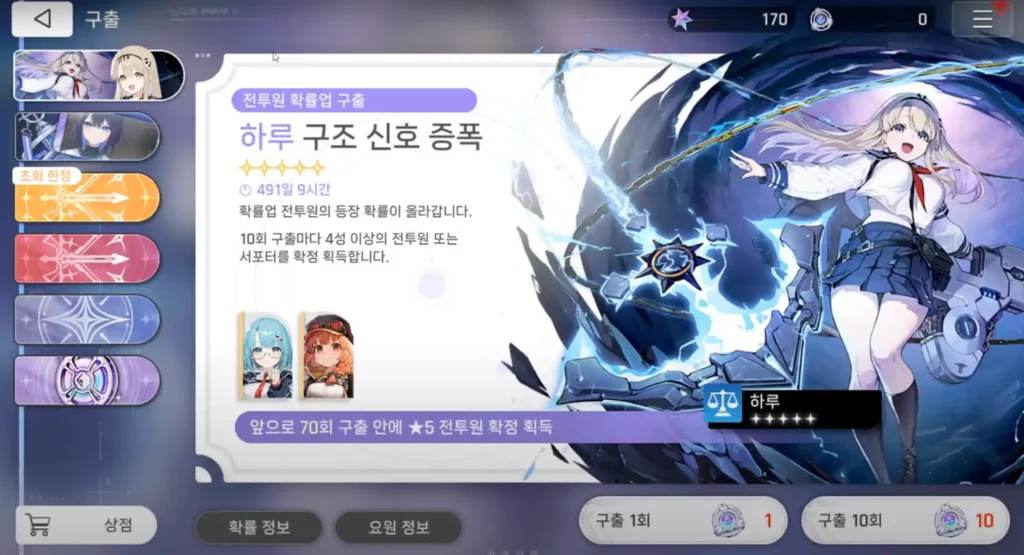
- Uses limited pulls.
- Same 5* rates as listed above, with a 50% chance to get the featured 5* Combatant.
- After losing the 50/50 to a standard 5* Combatant, the next 5* is guaranteed to be the rate-up 5* Combatant.
- Every 4* has a 50% chance to be one of the two rate-up 4* Combatants.
- Rate-up Combatants will not be added to the Standard pool.
Standard Combatant Banner
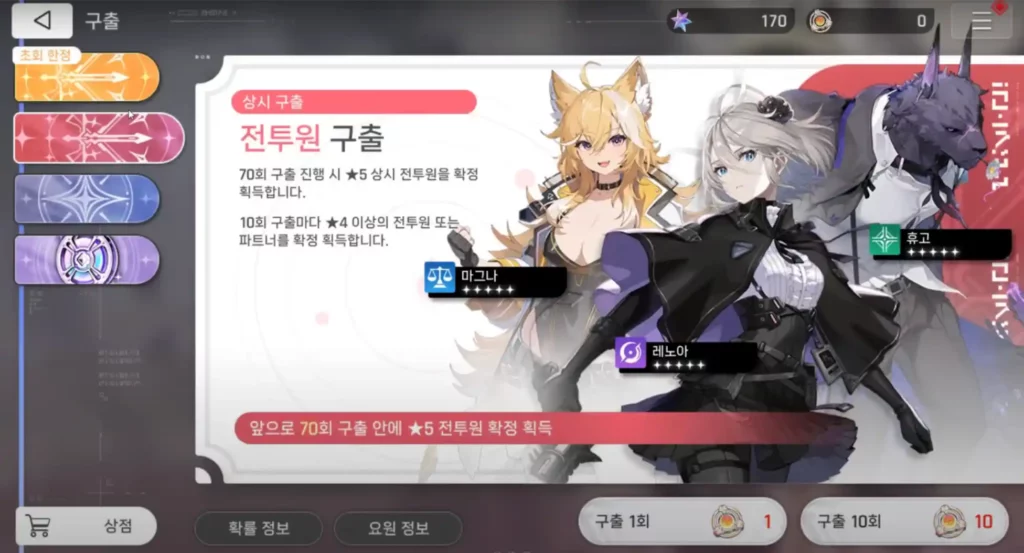
- Uses standard pulls.
- Same 5* rates, no 50/50—instead, you get a random 5* Combatant from the pool.
- All Standard 5* Combatants are available on this banner: Luke, Khalipe, Magna, Rin, Orlea, Mei Lin, Veronica, Renoa, Hugo, Kayron.
- Does not share pity with other banners.
Beginner Banner
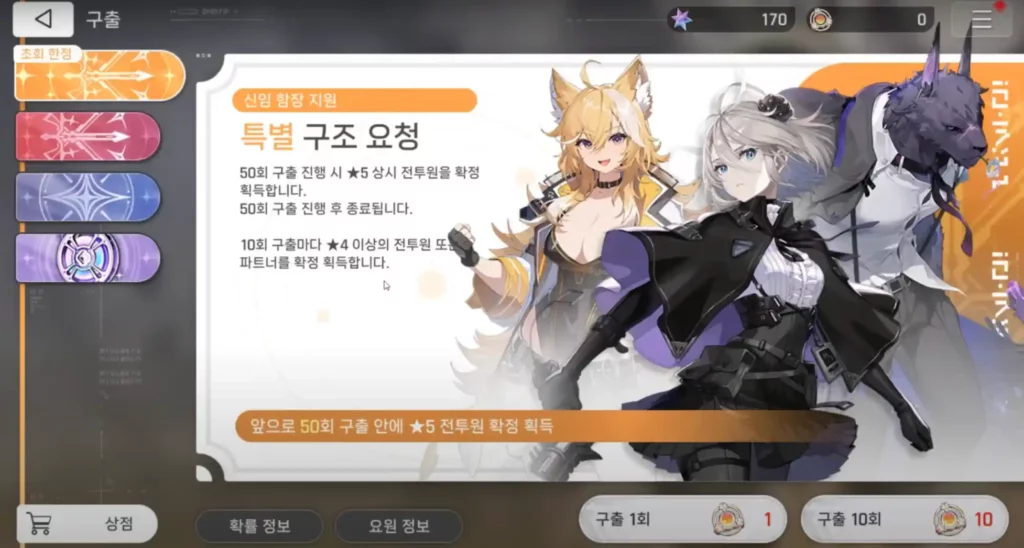
- Uses standard pulls.
- Flat 1% chance to get a 5*, but hard pity is lowered to 50. The banner disappears after 50 pulls. No 50/50—instead, you get a random 5* Combatant from the pool.
- Hard pity is not reset after getting a 5* Combatant.
- All Standard 5* Combatants are available on this banner: Luke, Khalipe, Magna, Rin, Orlea, Mei Lin, Veronica, Renoa, Hugo, Kayron.
- Does not share pity with other banners.
Limited Partner Banner
- I could not find any footage of players pulling on this banner, so there is no information on this yet, but we know it exists.
Standard Partner Banner
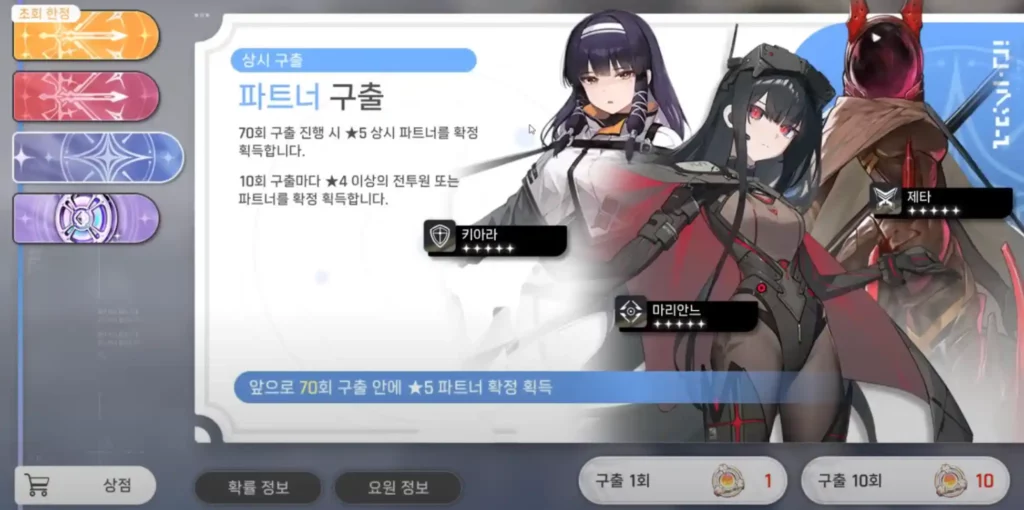
- Uses standard pulls.
- Same 5* rates, no 50/50—instead, you get a random 5* Partnet from the pool.
- All Standard 5* Partners are available on this banner: Bria, Kiara, Marianne, Zeta, Tina, Scarlett, Blanche, Janet, and Arwen.
Cosmetic Animation Banner
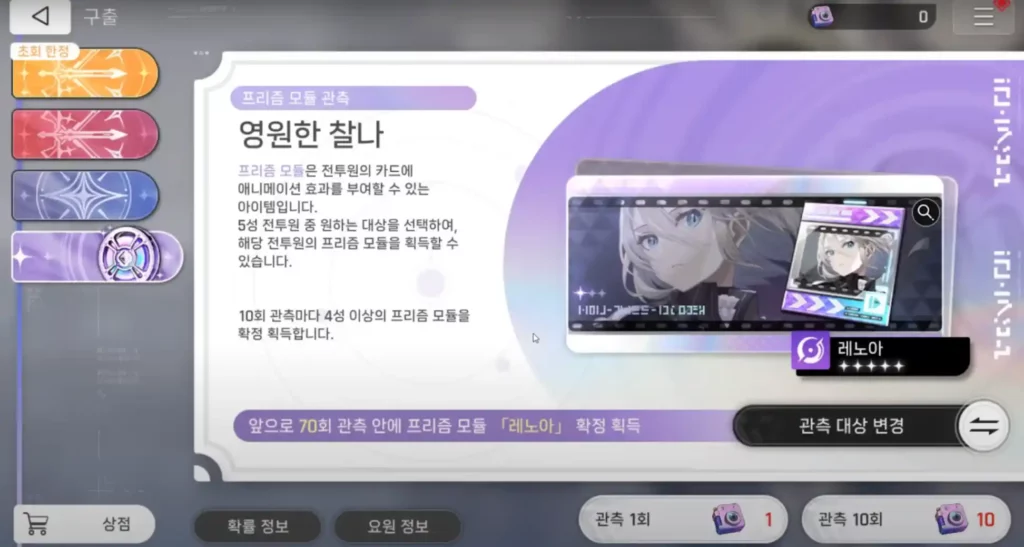
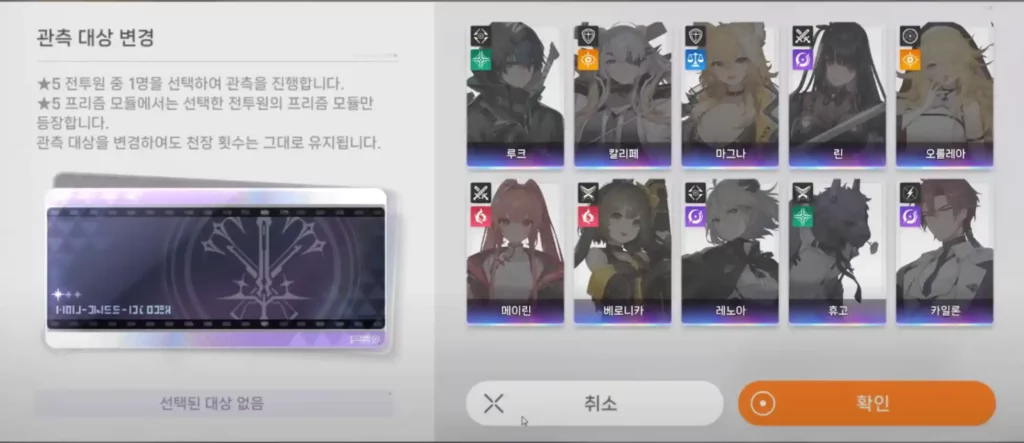
- Use special pulls (available from Captain Level rewards and the shop) to acquire a [Prism Module], which animates a character’s card.
- 70 hard pity for the selected 5*’s [Prism Module], no 50/50.
- Every 10 pulls guarantees a 4* or higher [Prism Module].
Combatants and Partners
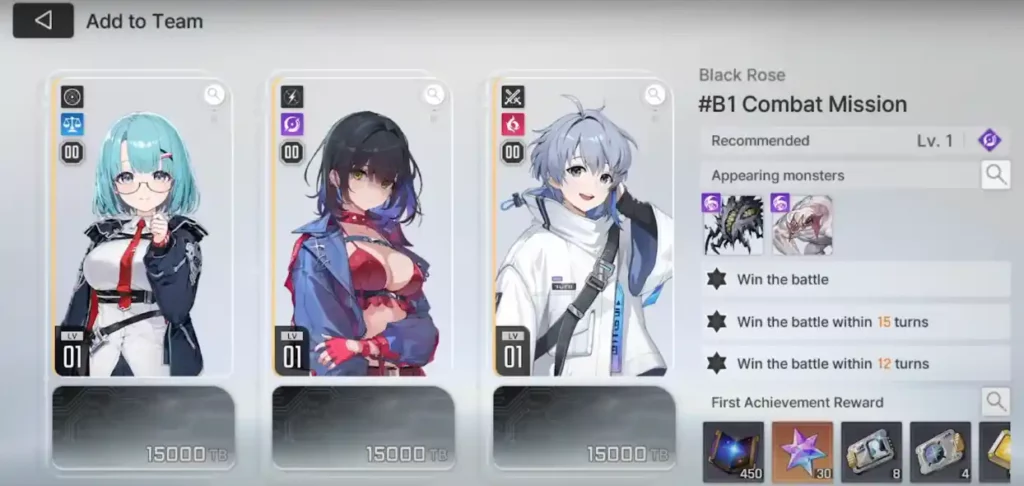
Combatants are your playable characters in CZN. They each have a Class, Faction, and Attribute.

A Combatant’s Class determines their role in the party, their starting stat spread, and which Partners work best for them. There are six Classes in the game so far: Striker, Vanguard, Ranger, Hunter, Psionic, and Controller. Vanguards have the highest base DEF (55) and HP (102) with the lowest ATK (135), while Rangers have the highest base ATK (180) but the lowest DEF (40) and HP (75); the rest of the Classes lie somewhere in between.

A character’s Faction indicates which organization they belong to in the world of CZN. The currently available factions are Terrascion, Ironrain, Stella Familia, Peltion, The Holy Crusaders, and Wanderer (basically Factionless). There is also Sileyma, but so far there are no Combatants with that affiliation.
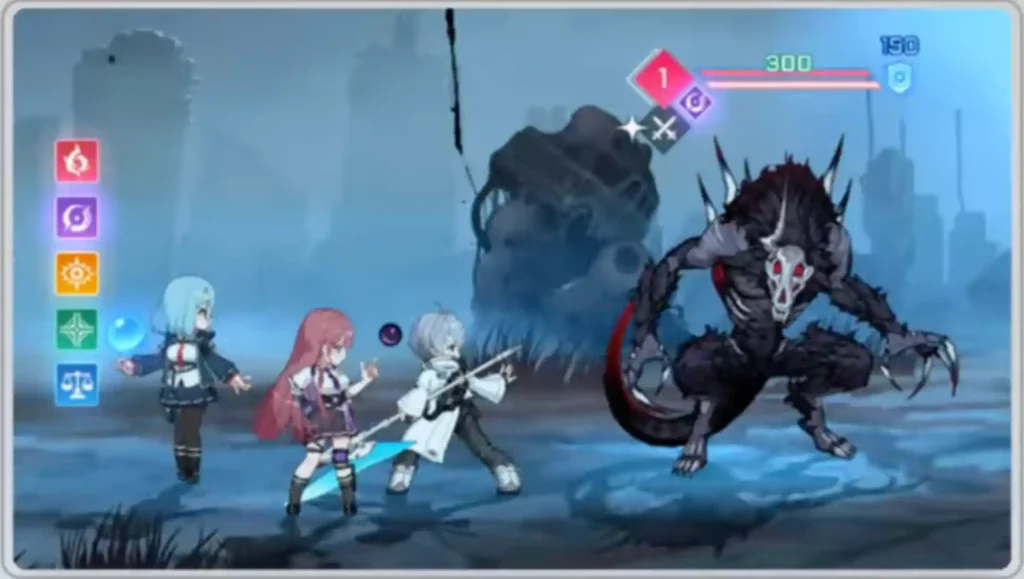
A Combatant’s Attribute determines what kind of Monster they are best at dealing with. The currently available Attributes are Passion (Red), Void (Purple), Instinct (Yellow), Order (Green), and Justice (Blue).
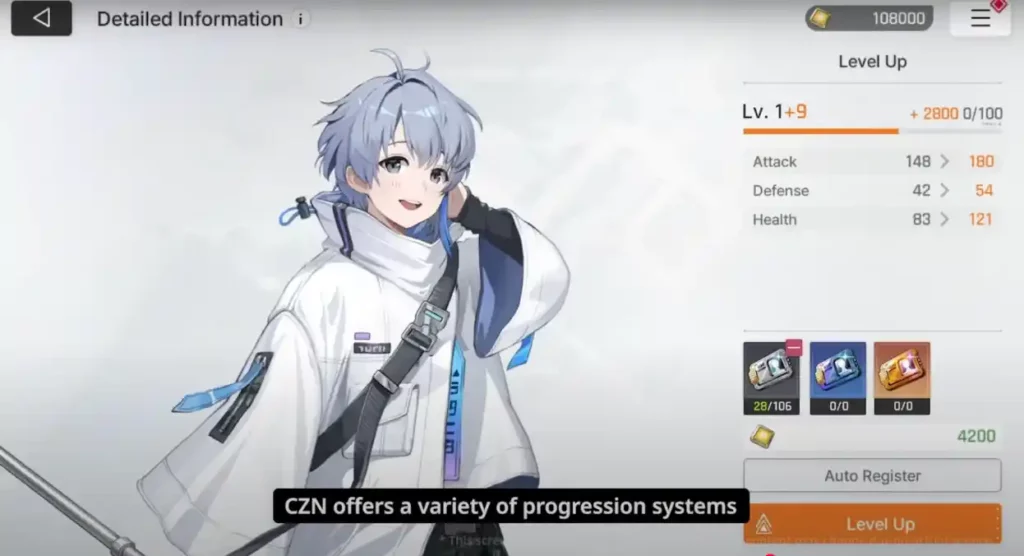
Characters have ATK, DEF, HP, Critical Rate, and Critical DMG as their main stats. You can level up your characters to increase their Attack, Defense, and Health using Battle Memories (this game’s EXP materials) and Units (this game’s base money currency). Once you level them up to max, you can Promote the character using materials to uncap their level.
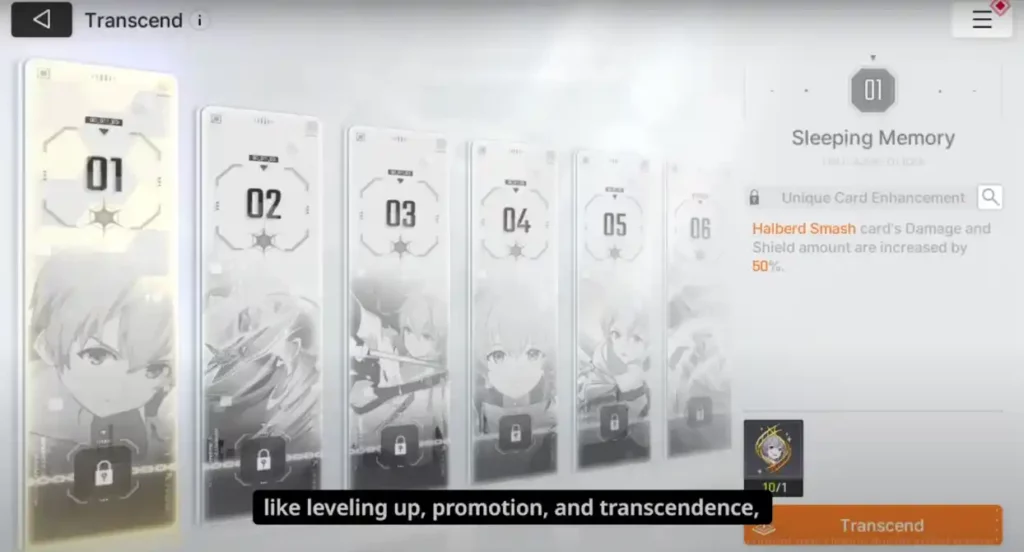
You can Transcend your Combatants by acquiring duplicate copies of the character. A Combatant is maxed out at T6, or seven copies of the character in total.
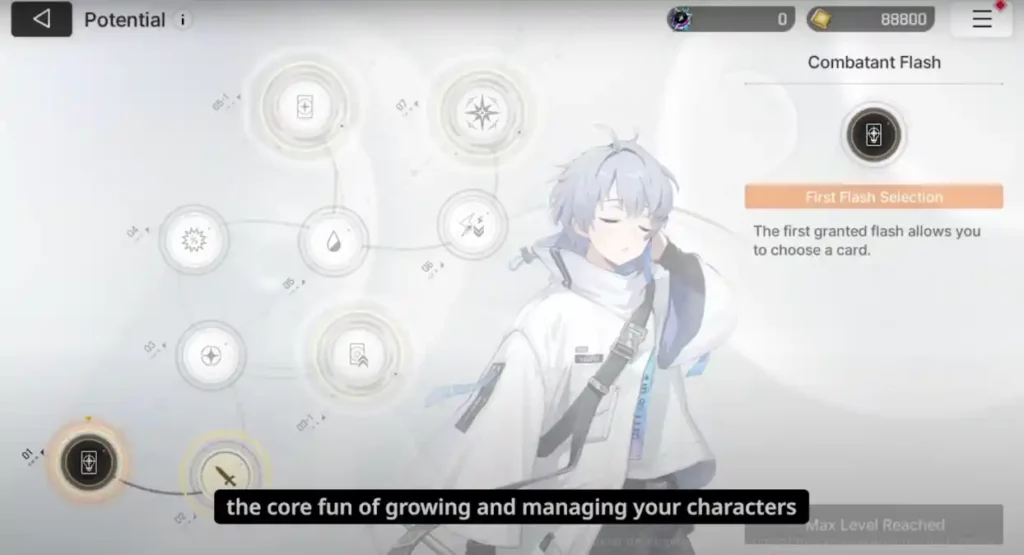
You can unlock different branches of a Combatant’s Potential to activate different in-combat passives. This is like Honkai: Star Rail’s Trace system, where you farm for materials in battle stages and spent them on upgrading your characters’ passives and skills. Owen’s [First Flash Selection] allows you to choose one of the generated Unique Cards during the first Flash of the battle, instead of it being random. Rei’s [Basic Card Mastery] increases the Critical Rate of her [Dark Sword] cards by 15%. From the limited footage we’ve seen so far, unlocking a node on the Potential tree can require enemy drops, Units, and Attribute crystals (there is a type of crystal for each type in the game).
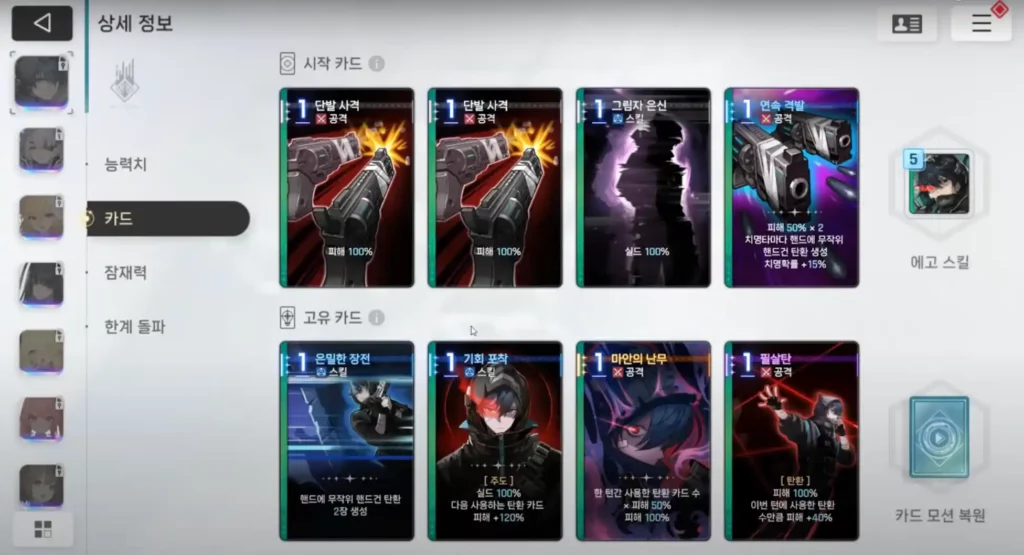
Every Combatant has a Starting Deck of four cards and a set of Unique Cards they can generate in battle (or through Roguelike events). Cards have an Action Point (AP) cost and belong to one of three types: Attack, Skill, and Upgrade. These types are analogous to Slay the Spire’s Attack, Skill, and Power cards. Attack cards deal damage, Skill cards generally provide Shields or some other resource, and Upgrades generally provide a buff that lasts for the rest of battle. Here are some examples:
- Renoa’s [Instant Judgment] Attack deals 1 instance of damage; if you have a [Requiem Bullet] in your hand, the bullet is discarded and this card deals more damage.
- Mika’s [Tactical Analysis] skill grants 2 stacks of Wave (her own unique resource) and 1 stack of Save, which preserves unused AP for one turn.
- Magna’s [Crystallization] Upgrade grants her 1 stack of [Counterattack] at the start of each turn.
Characters also have an Ego Skill, which costs Ego Points (EP) to cast. These are generally strong ultimate-type abilities. You can read more in the Battle section below.
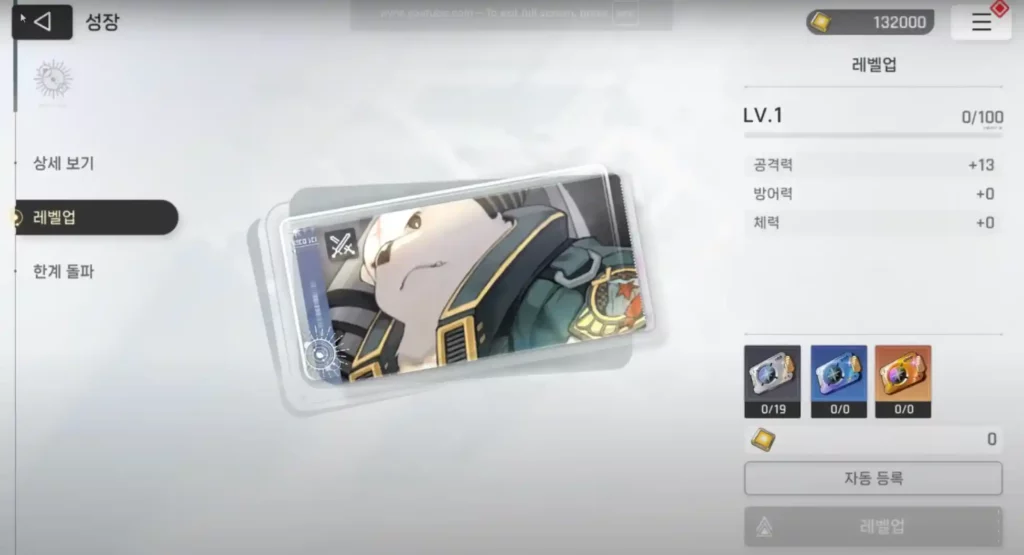
Partners are characters you can equip on your Combatants (like weapons in similar games). Partners have 3 main elements:
- Stat boost: Every Partner has an ATK, DEF, and HP stat.
- Class-locked Passive: This only works if the Combatant is the same Class as the Partner. Passives usually include a single stat boost and an in-combat passive effect.
- Ego Skill: Like Combatants, Partners also have Ego Skills that cost EP to use.
This means that while you can technically equip any Partner on a Combatant for the stat boost and Ego Skill, you’ll want to match their Class to get the Passive. The stat boosts from Passives are really important because they are percentage increases and aren’t limited to ATK/DEF/HP. Partners like Solia and Serithea are one of the few sources of Critical Rate/DMG in the game.
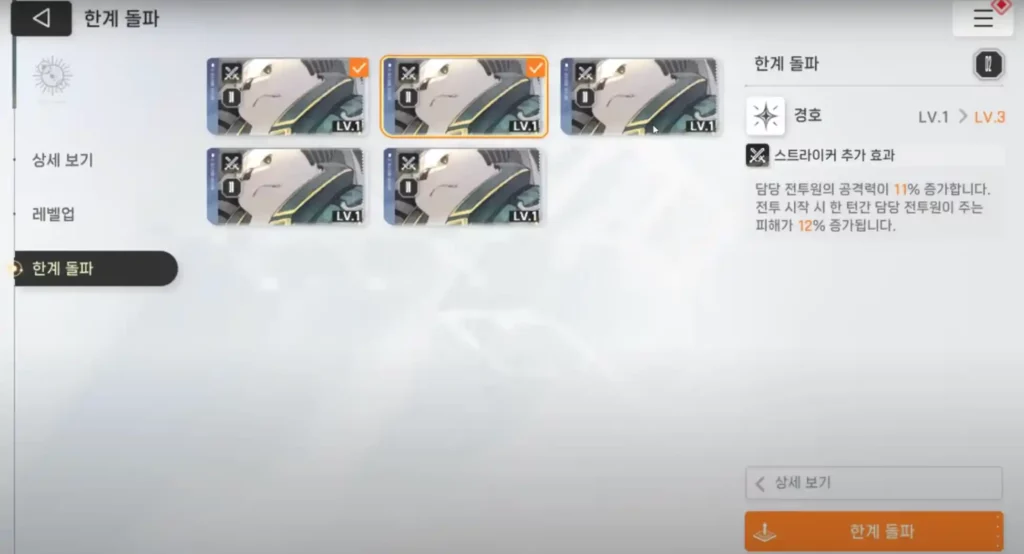
You can consume copies of a Partner to make its Passive stronger. A Partner is maxed out at 5 copies in total (including the original copy).
Battle Gameplay
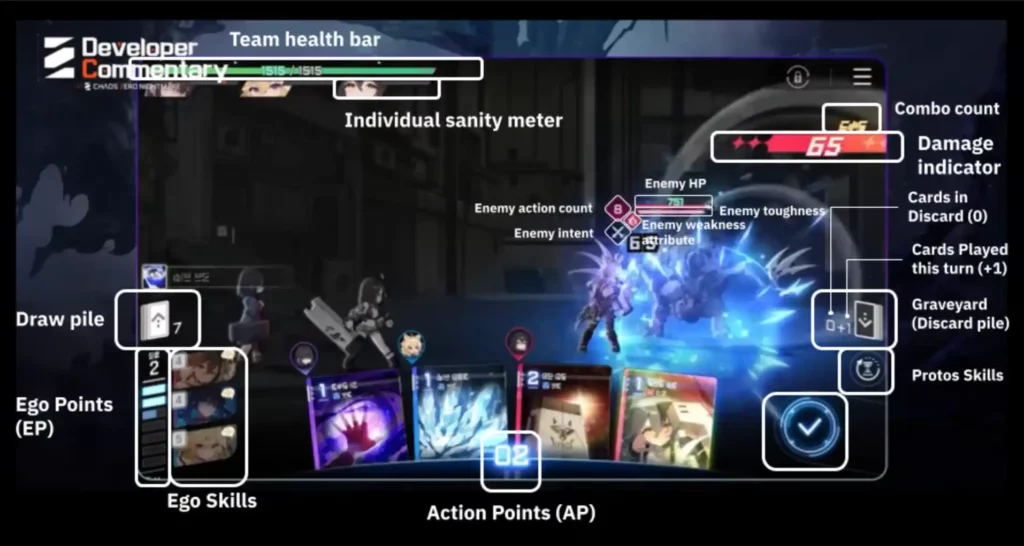
Here’s a diagram of all the different elements in Chaos Zero Nightmare’s gameplay. I’ll be breaking them down element by element, so feel free to skip to whatever you’re most curious about.
Slay the Spire-style Card Playing
The gameplay is basically exactly like Slay the Spire. At the start of the turn, you draw 5 cards from the Draw Pile and gain 3 AP. The Draw Pile consists of all three Combatants’ cards. Your remaining AP for the turn is displayed at the bottom of the screen. You can end your turn with the button on the bottom right.
When you play a card, you drag it from the bottom of the screen; if it requires targeting, you select which monster to target.
After the card is played, it goes into the Cards Played section of the Discard Pile. If you draw more cards during the turn but there aren’t enough in the Draw Pile, all cards in the Discard Pile EXCEPT Cards Played this turn are shuffled back into the Draw Pile. This is one of the main differences from StS’s gameplay, as this prevents some types of infinites.
At the end of the turn, all cards left in hand and all Cards Played this turn are added to the Discard Pile. Cards with [Retain] stay in your hand.
The Team, Health Bar, and Stress Bars
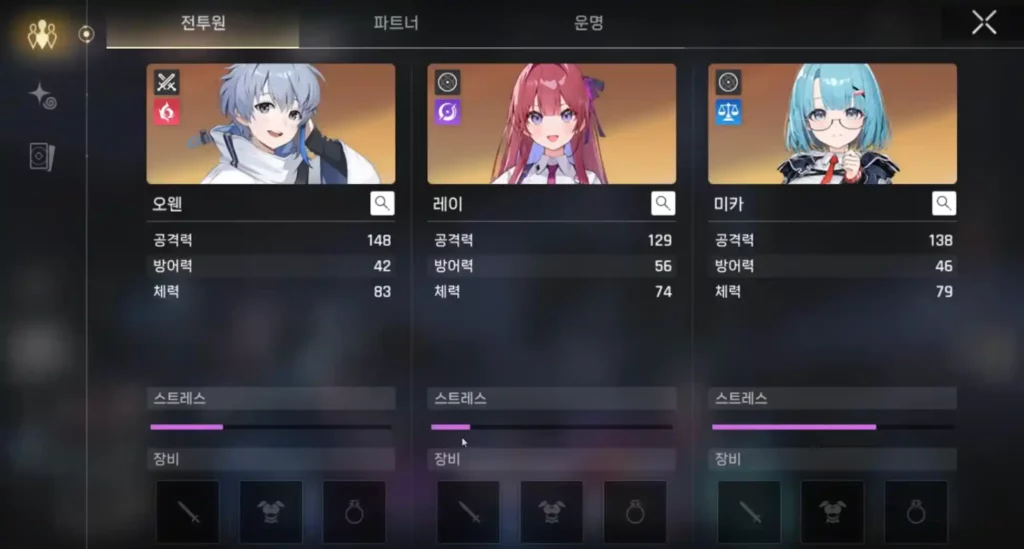
You can deploy up to 3 Combatants and 3 Partners in a battle. Only Combatants will appear in battle. The team’s HP is shown in a collective Health Bar, which means your team can only get wiped out together. However, they each have an individual Stress Meter.
Stress and Breakdowns
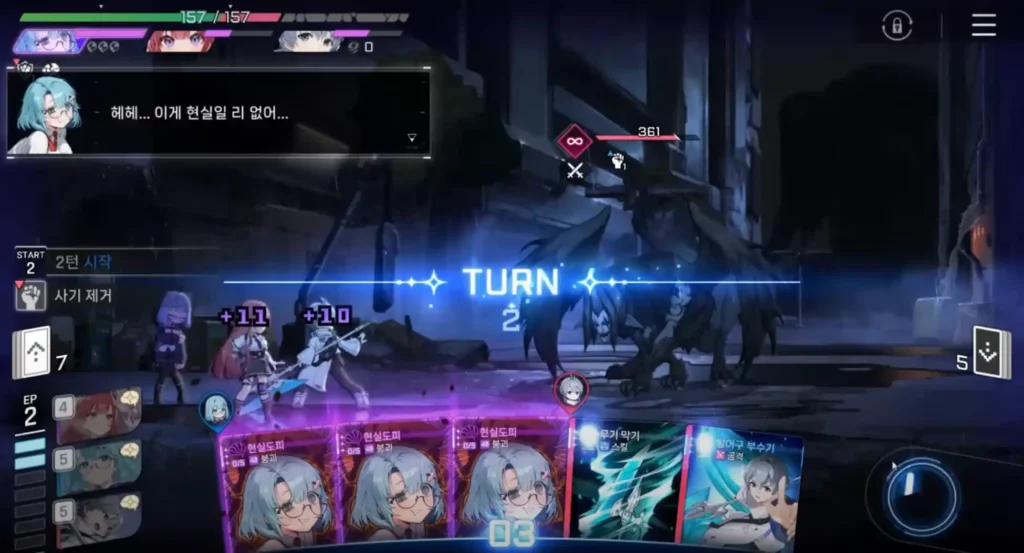
Stress increases when characters take damage and it also naturally goes up at the end of the turn. The more damage a character takes, the more Stress they get.
When a Combatant’s Stress fills up completely, they suffer a Breakdown. The team’s HP bar immediately loses Max HP equal to that Combatant’s HP stat, and the other characters get Stress. During a Breakdown, all of the Combatant’s cards are replaced with Breakdown Cards, and they cannot cast any Ego Skills. Breakdown cards do not cost AP to play, but they count against your 5 cards drawn per turn.
If you play 5 of a character’s Breakdown cards, they will recover from the Breakdown. The Team’s Max HP goes back up to its original amount, but its current HP is only healed for half that character’s HP stat. This means that having a Breakdown and recovering from it means you lose half the character’s HP stat overall. All allies also reduce their Stress and you gain some Ego Points.
Once a character has recovered from a Breakdown, the number of Breakdown cards you need to recover from the next Breakdown goes up by 1.
Enemy Action Count, Intent, Weakness, and Toughness
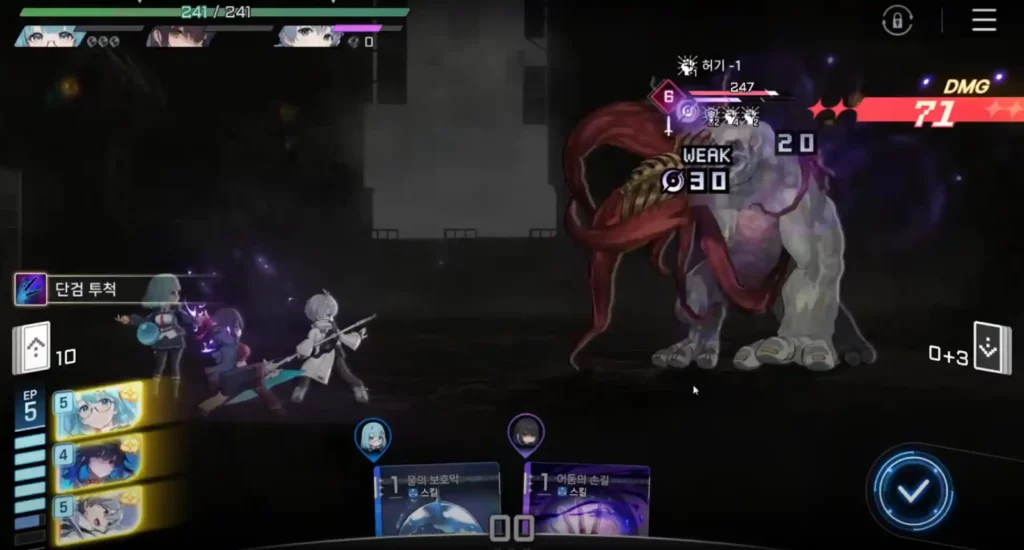
All enemies have an Action Count, which shows how many cards you can play before the enemy takes action. Every time you play a card, the Action Count goes down by 1. Even if it’s your turn, the enemy will immediately take action when its Action Count reaches 0. After that action, however, the enemy will not act again until the next turn. When you end your turn, all enemies that have not taken action this turn will have their Action Count set to zero. Enemies with an infinite Action Count will only take action once you have ended your turn.
The enemy’s intent shows what action they are planning to take. This can be a single-target attack, a multi-hit attack, a status condition, inflicting Stress, etc. You can click into the enemy’s info to see exactly what it plans to do.Enemies have an HP bar that you need to deplete with attacks in order to eliminate them. The little Attribute symbol next to their HP bar shows their Weakness Attribute, or the type of character they are weak to. Some enemies will have a Toughness bar, which you can lower with high-cost cards or cards of enemy’s Weakness Attribute. Once Toughness is reduced to 0, the enemy becomes Subdued. When you Subdue an enemy, all allies reduce their Stress and you gain 1 AP; in addition, the enemy’s Action Count is increased by 1 and their Toughness will refill on their next turn.
Ego Skills and Ego Points (EP)
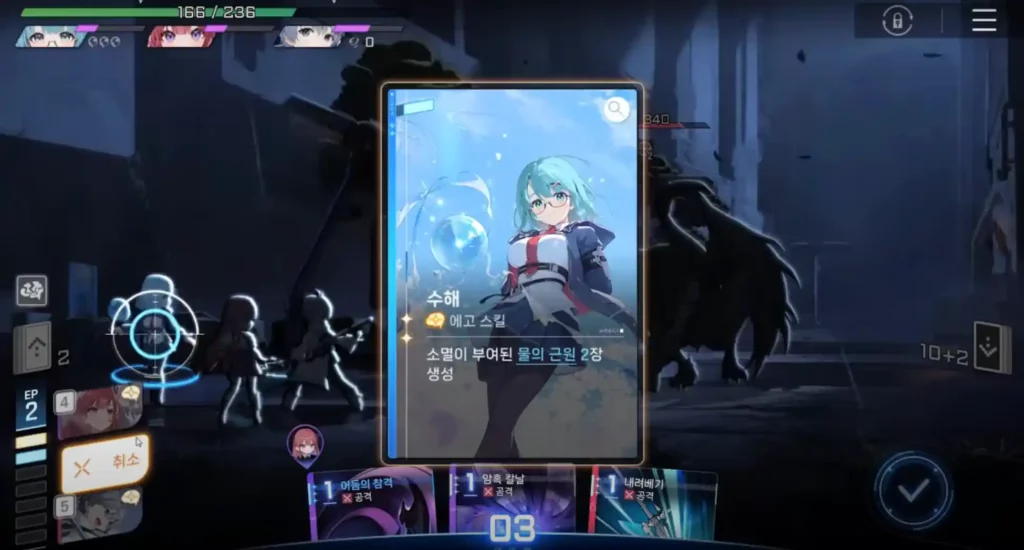
Every Combatant and Partner has an Ego Skill that they can cast during their turn. These require EP, which is displayed on the bottom left corner. You can gain EP by playing certain cards, recovering from a Breakdown, or defeating an enemy. Here are some examples:
- Rin’s [Dark Cloud Arcane Art: Truth] costs 6EP, deals 400% DMG, reduces an enemy’s Toughness by 2 squares, and inflicts 2 stacks of [Vulnerable].
- Priscilla’s [Tetra’s Web] costs 2 EP, deals 100% DMG, reduces an enemy’s Toughness by 1 square, and inflicts 2 rounds of [Passion Vulnerability].
Flashes and Card Flashes
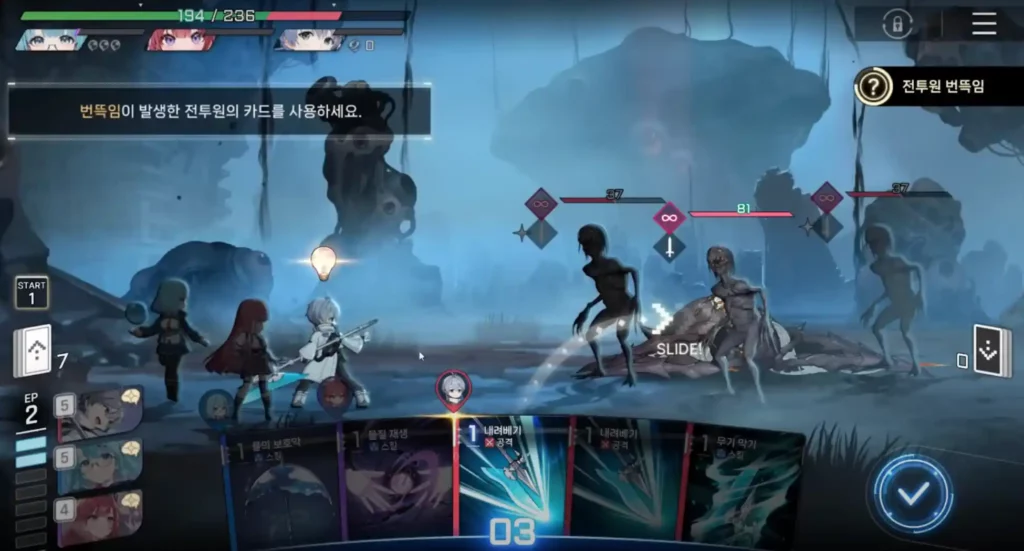
At the start of your turn, a card might get a Flash. Playing this card will inspire the Combatant, who will then generate one of their Unique Cards and set its cost to 0 for the turn. This card is permanently added to your deck for the rest of the run.
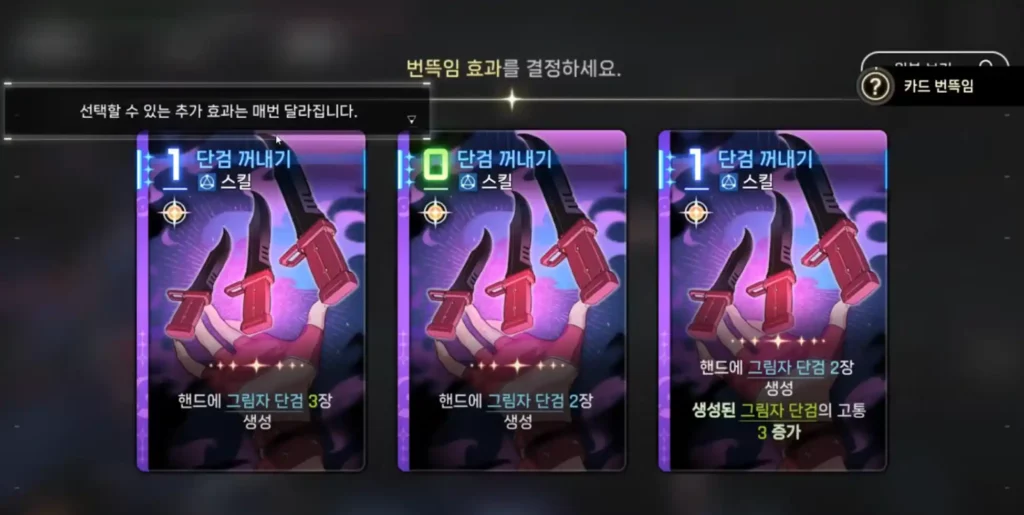
When you play a card with a Flash, there is a chance for a Card Flash, which allows you to upgrade the card into a stronger version. This upgraded card lasts for the rest of the run.
Chaos Missions (Roguelike Mode)
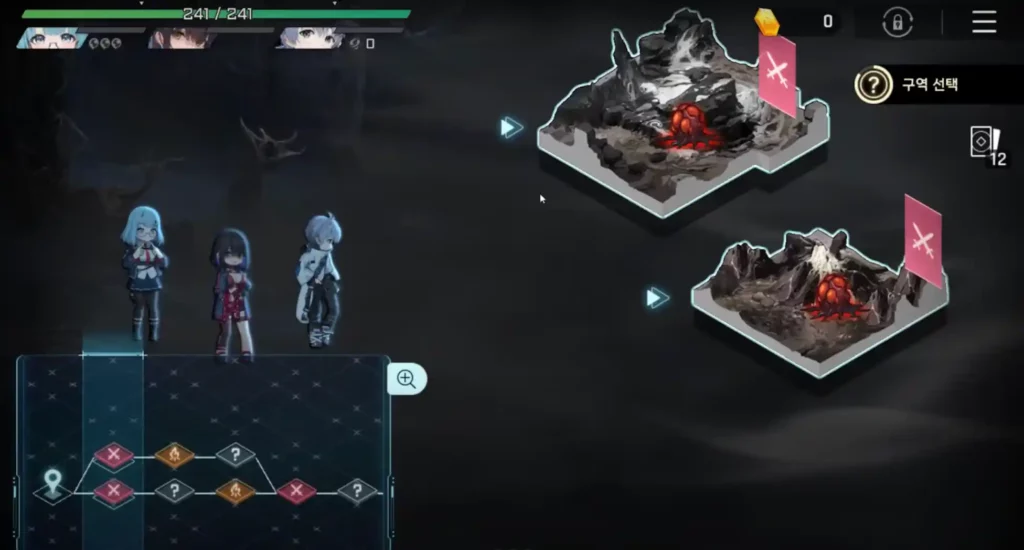
Chaos Missions are the main roguelike mode in the game. You pick between different zones to progress along a map (like nodes in Slay the Spire).
Fates
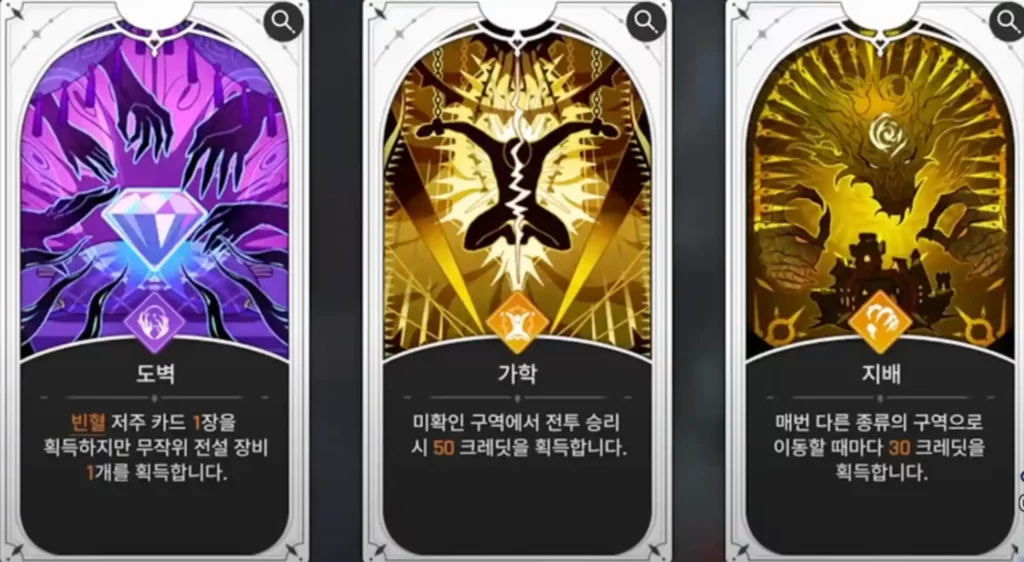
When you enter Chaos, you get to choose a Fate to follow. These grant a passive effect for the rest of your run.
Zones
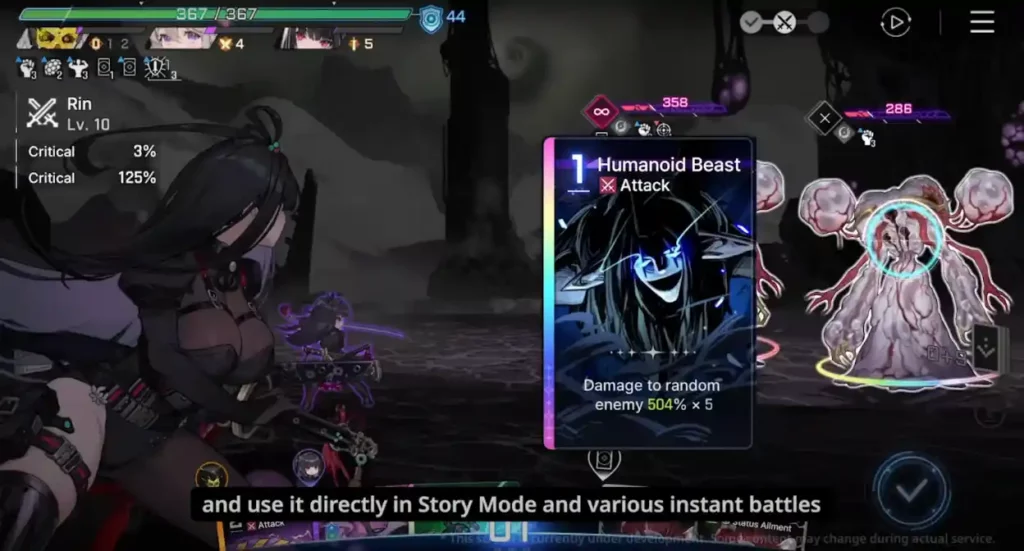
A combat zone can contain different types of enemies. D–B-Rank enemies drop Credits, the currency used to buy equipment during a run (Credits do not carry over between runs). A-Rank enemies drop 1 random piece of rare–legendary equipment, and there’s also a low chance to get a random Enemy Card. S-Rank enemies drop 2 pieces of legendary equipment and 1 random Enemy Card.
When you defeat all enemies in a combat zone, there’s a chance for more to invade. You can either flee or stay and fight for better rewards.
Sometimes, you may encounter a harder variant of an enemy (like Flaming Elites in StS), which drops better rewards if you can defeat it.
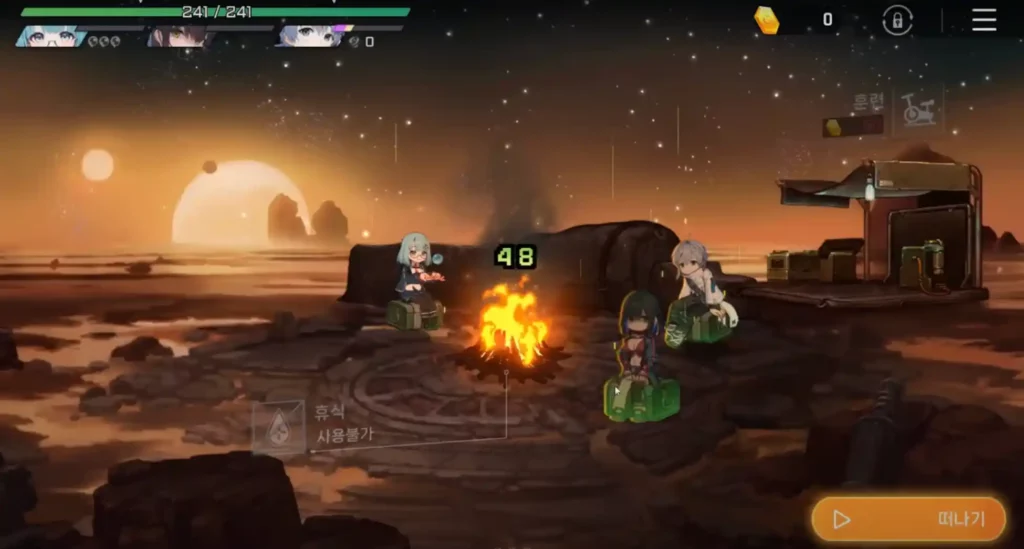
Safe Zones are like Campfires in StS: you can either rest to recover HP and Stress or you can Train to get a better card. What’s different is that the Shop is not a separate node and instead has a random chance to appear in a Safe Zone. You can buy equipment and cards using Credits at the Shop. Combatants can only have up to 3 types of equipment equipped at a time (1 Weapon, 1 Armor, 1 Accessory), but you can recycle any extra equipment for Credits.
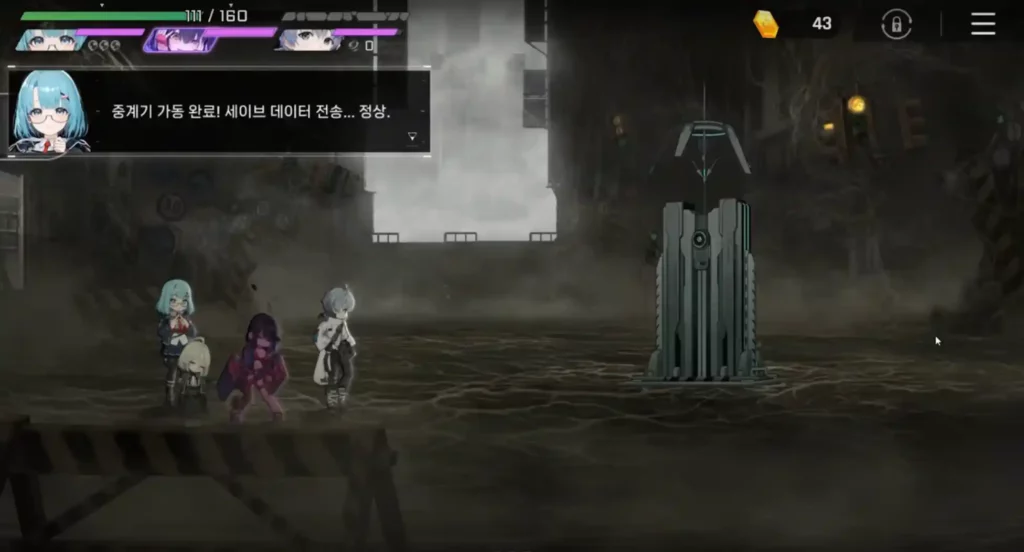
Finally, the Supply Zone allows you to create Save Data and receive supplies. It’s a checkpoint.
Save Data
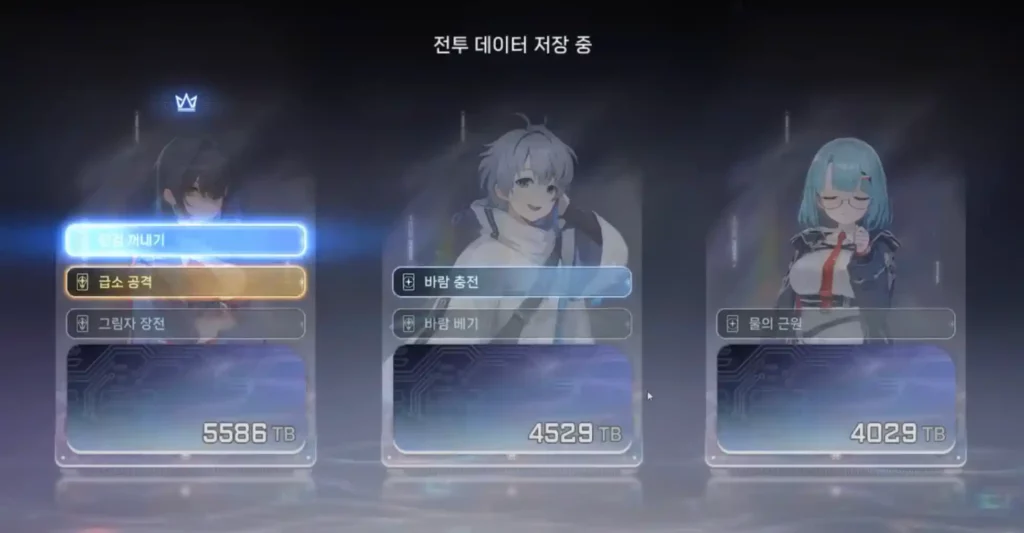
When you reach a Supply Zone in the roguelike mode, you can generate Save Data to use later in Combat Missions. This includes any cards you generated or upgraded through Flashes and also your Combatants’ equipment. Save Data allows you to use a particular build (like Veterans in Umamusume) for harder stages later on.
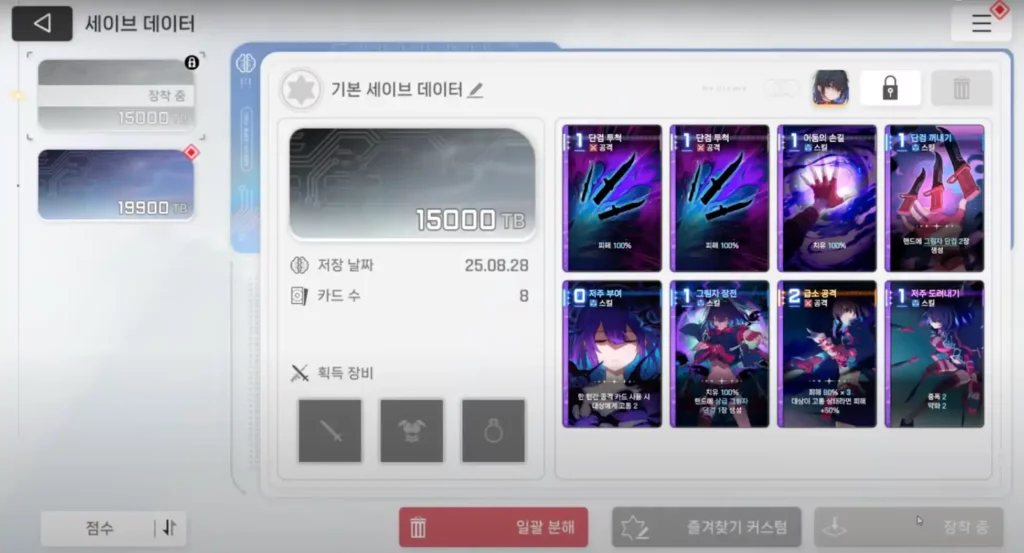
You can decorate your favorite Save Data with different backgrounds and stickers.
Shops
Anyone familiar with Genshin Impact will recognize this game’s version of the Starglitter and Stardust shops. In CZN, [Hero’s Moments] are your Starglitter and [Traveler’s Moments] are your Stardust.
- When you acquire the 2nd–6th copy of a 5* Combatant, you get 40 [Hero’s Moments]. Starting from the 7th copy, you get 100 [Hero’s Moments].
- When you acquire the 2nd–6th copy of a 4* Combatant, you get 8 [Hero’s Moments]. Starting from the 7th copy, you get 20 [Hero’s Moments].
- When you acquire a copy of a 4* Partner, you get 8 [Hero’s Moments].
- When you acquire a copy of a 3* Partner, you get 20 [Traveler’s Moments].
Hero’s Moment Shop
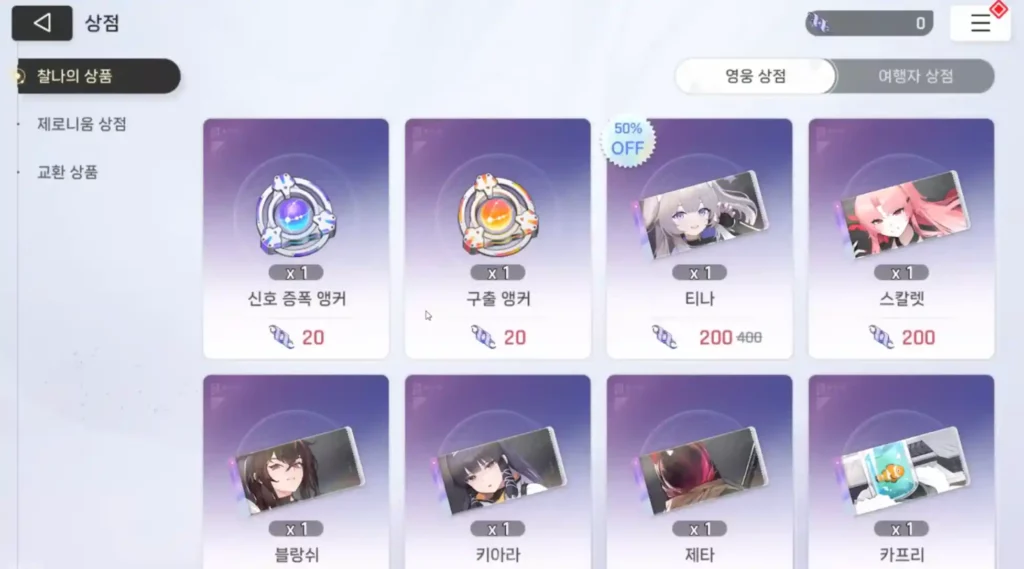
You can exchange [Hero’s Moments] for more pulls or a standard 5* Partner. You can purchase 1 limited or standard pull for 20 [Hero’s Moments], while standard 5* Partners require 200 [Hero’s Moments].
Traveler’s Moment Shop
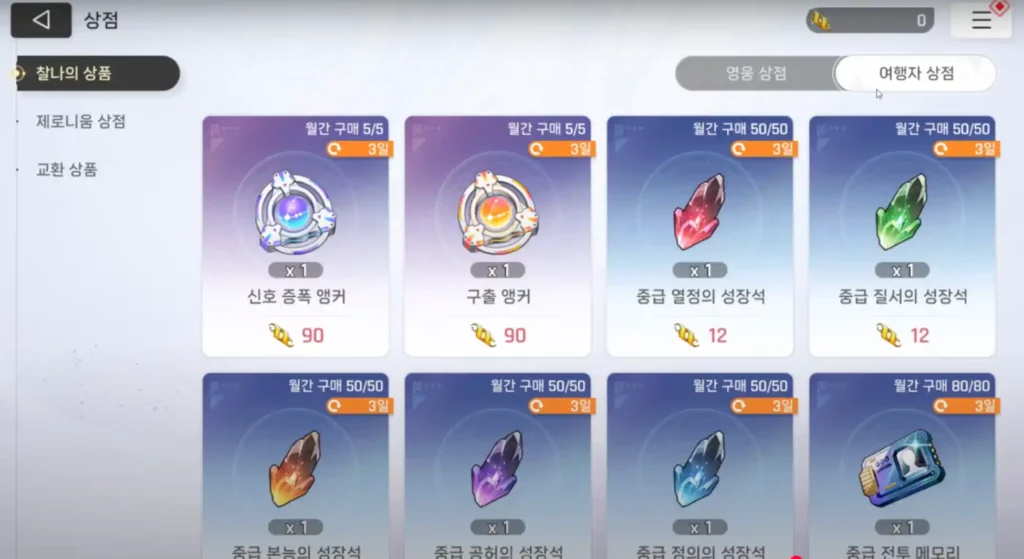
You can exchange [Traveler’s Moments] for more pulls, growth materials, exp materials, and in-game currency. You can purchase 5 limited pulls and 5 standard pulls per month for 90 [Traveler’s Wits] each.
Zeronium Shop
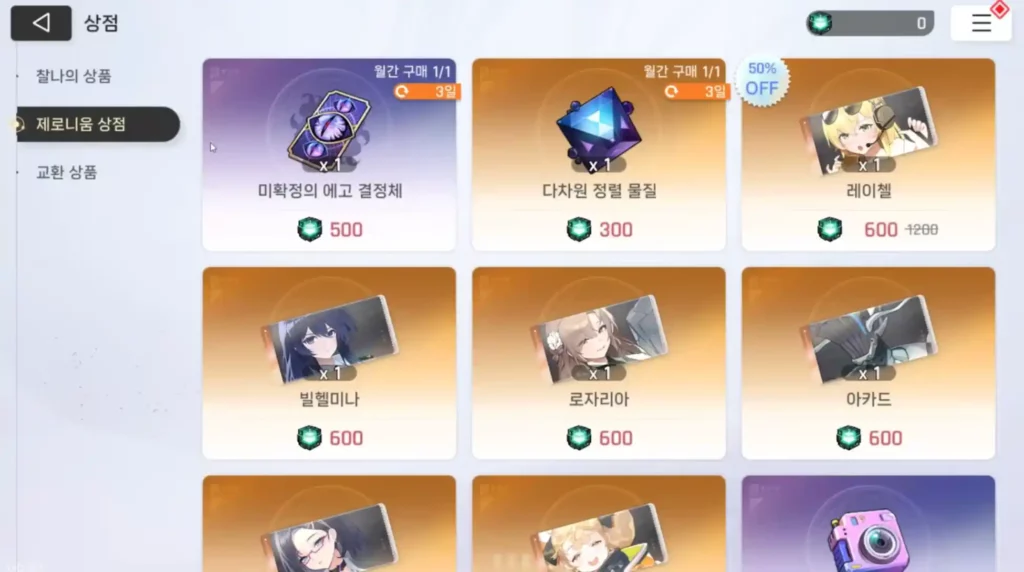
You can exchange Zeronium (acquisition unclear) for 4* Partners, animation pull currency, and other in-game items.
Anchor Shop
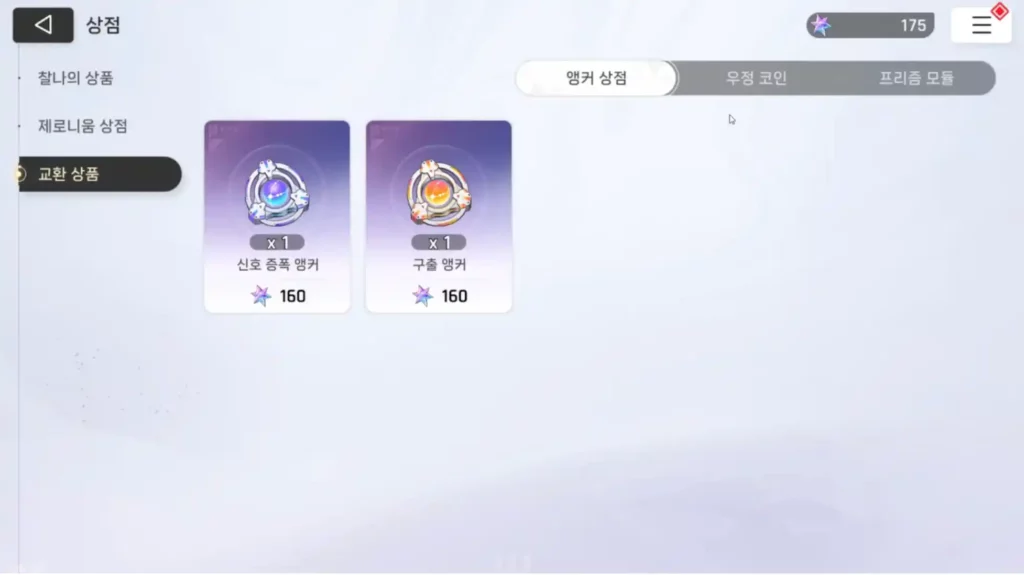
Here, you can exchange 160 crystals for a limited or standard pull.
Friendship Coin Shop
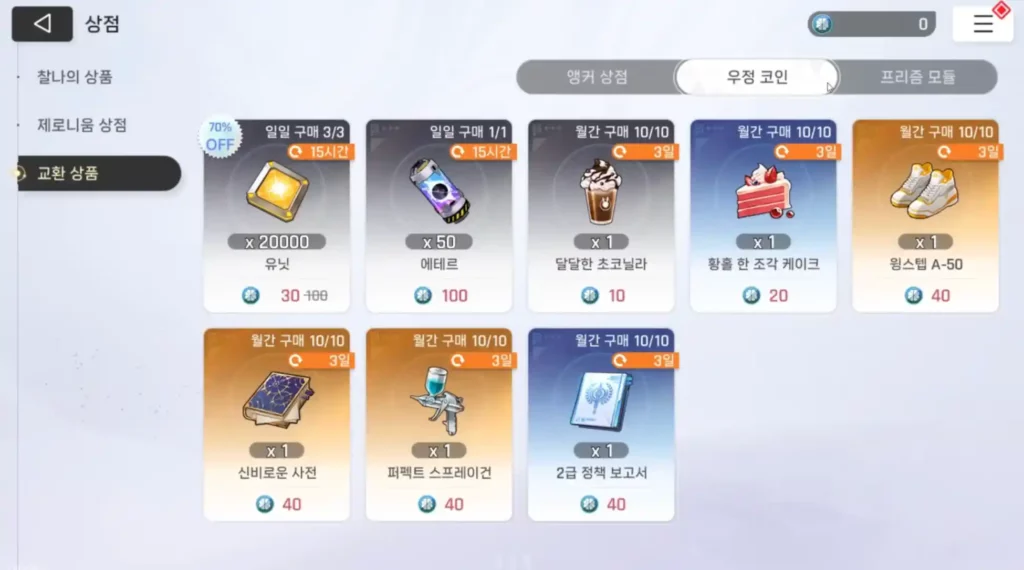
You can get Friendship Coins from sending Likes to your friends. Here you can exchange those Coins for Units (this game’s money, i.e. Mora), Ether (this game’s stamina that caps at 240, i.e. Resin), food items (which grant your team buffs), and other in-game items.
Prism Module Shop
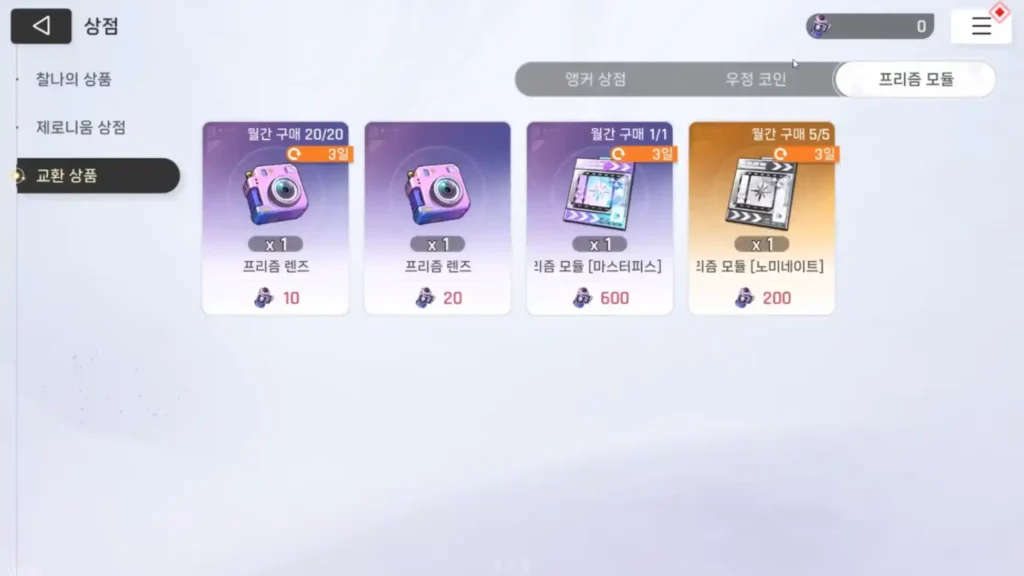
Here you can exchange [Prism Film] (a premium currency, I think) for animation pull currency and items that unlock animations for 5* and 4* Combatants.
Other Features
Bonding with your characters
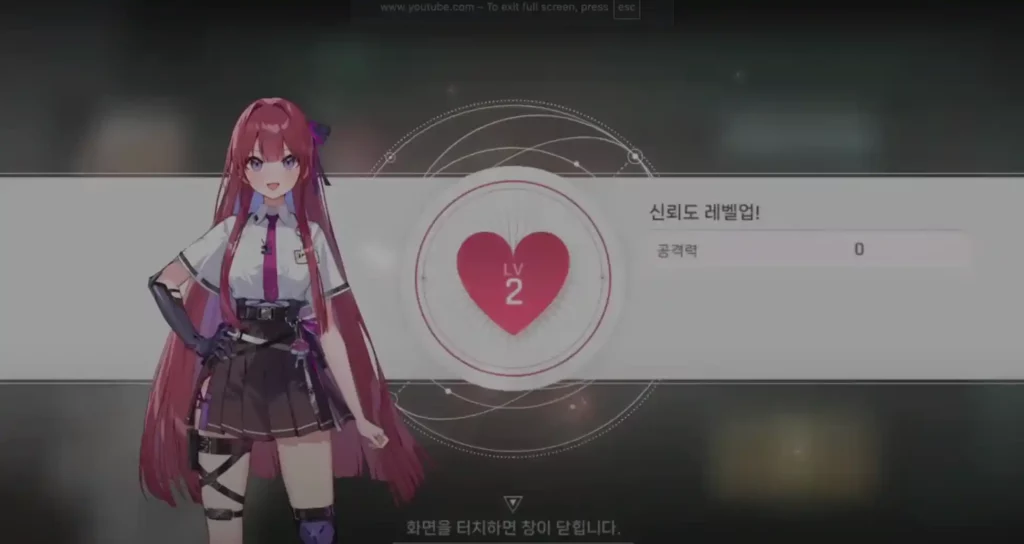
You can raise your Bond level with a character by going on outings with them, giving them gifts, or providing psychiatric treatment.
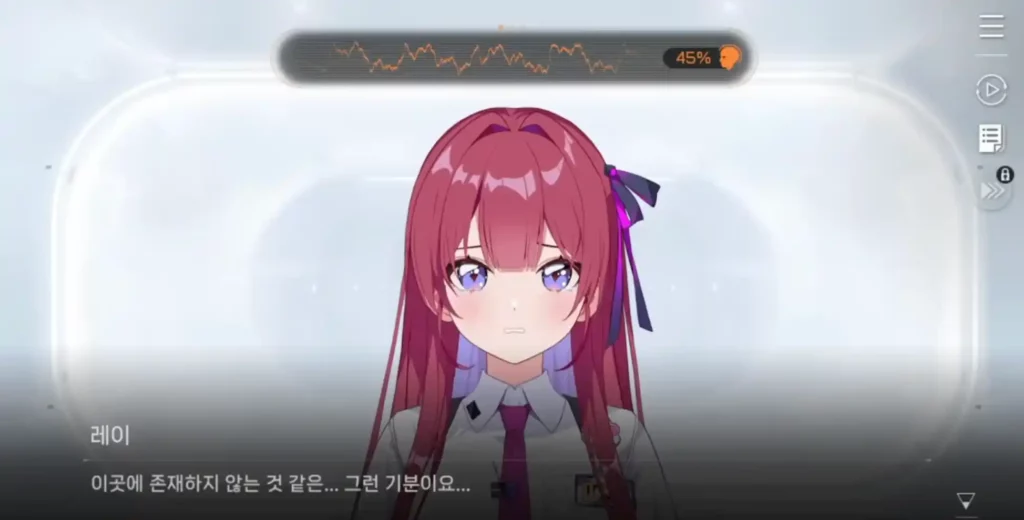
I’m not kidding.
Garden Café
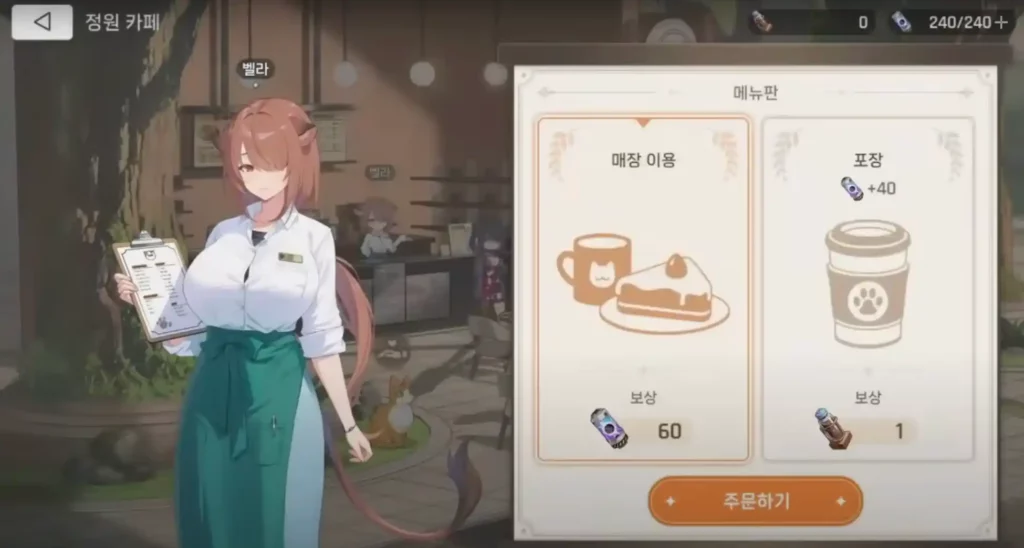
You can order drinks at the Garden Café. Each day, you can order the beverage on the right to replenish 40 Ether.
Starlight Restaurant
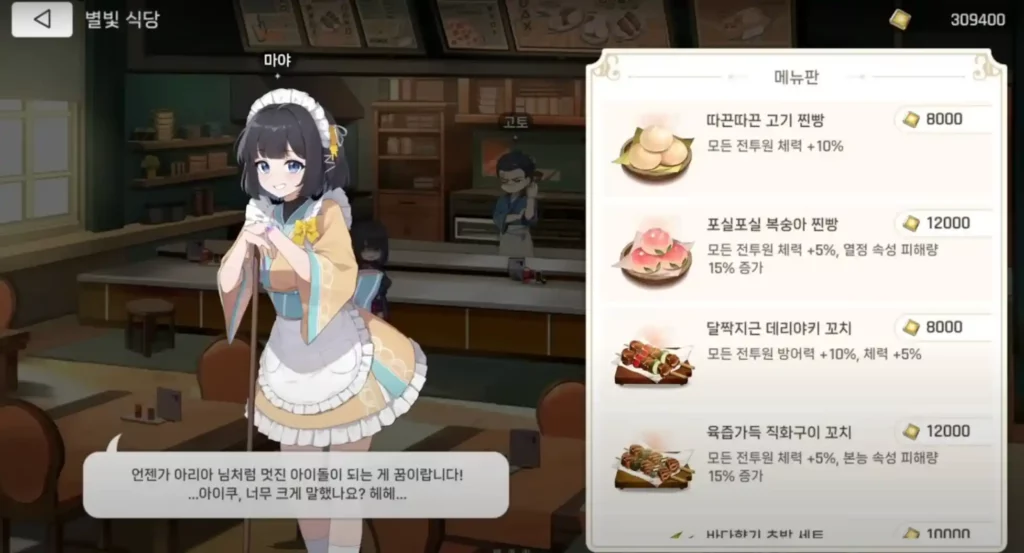
You can also spend Units to buy food at the Starlight Restaurant to buff your party. Here are the options shown in the gameplay trailer:
- Hot Steamed Buns: 8000 Units. +10% HP for all Combatants.
- Fluffy Peach Steamed Buns: 12000 Units. +5% HP for all Combatants and +15% Passion Attribute DMG.
- Sweet and Spicy Teriyaki Skewers: 8000 Units. +10% DEF and +5% HP for all Combatants.
- Juicy Grilled Skewers: 12000 Units. +5% HP for all Combatants and +15% Instinct Attribute DMG.
And that’s all we know about Chaos Zero Nightmare so far! We’ll get a lot more information once the Closed Beta begins for Global. Do note that because all of this information is from the Korean closed beta test, this information is subject to change and translation errors.
Ergo
I can tell a lot of effort went into this detailed breakdown, thanks for the hard work!